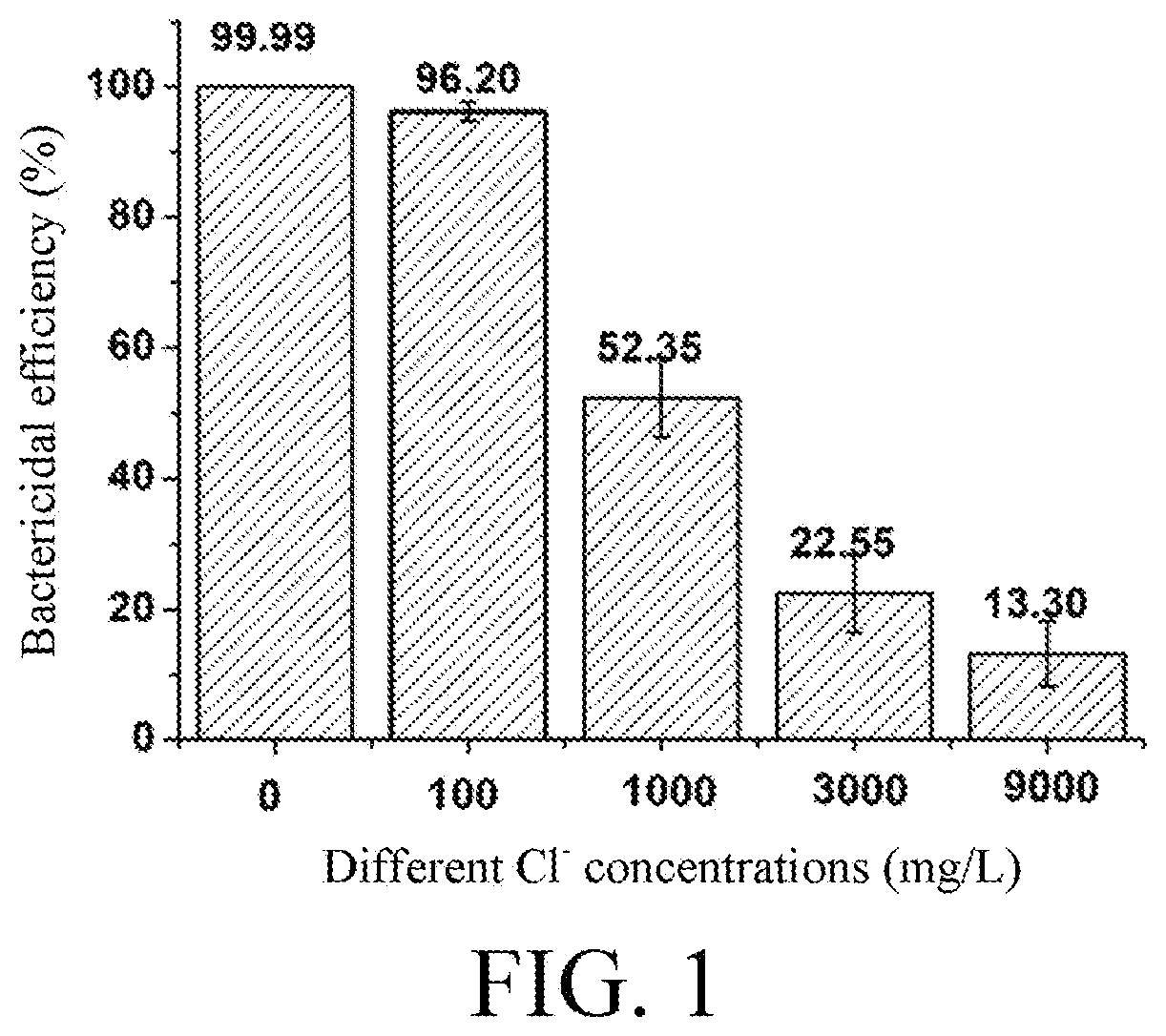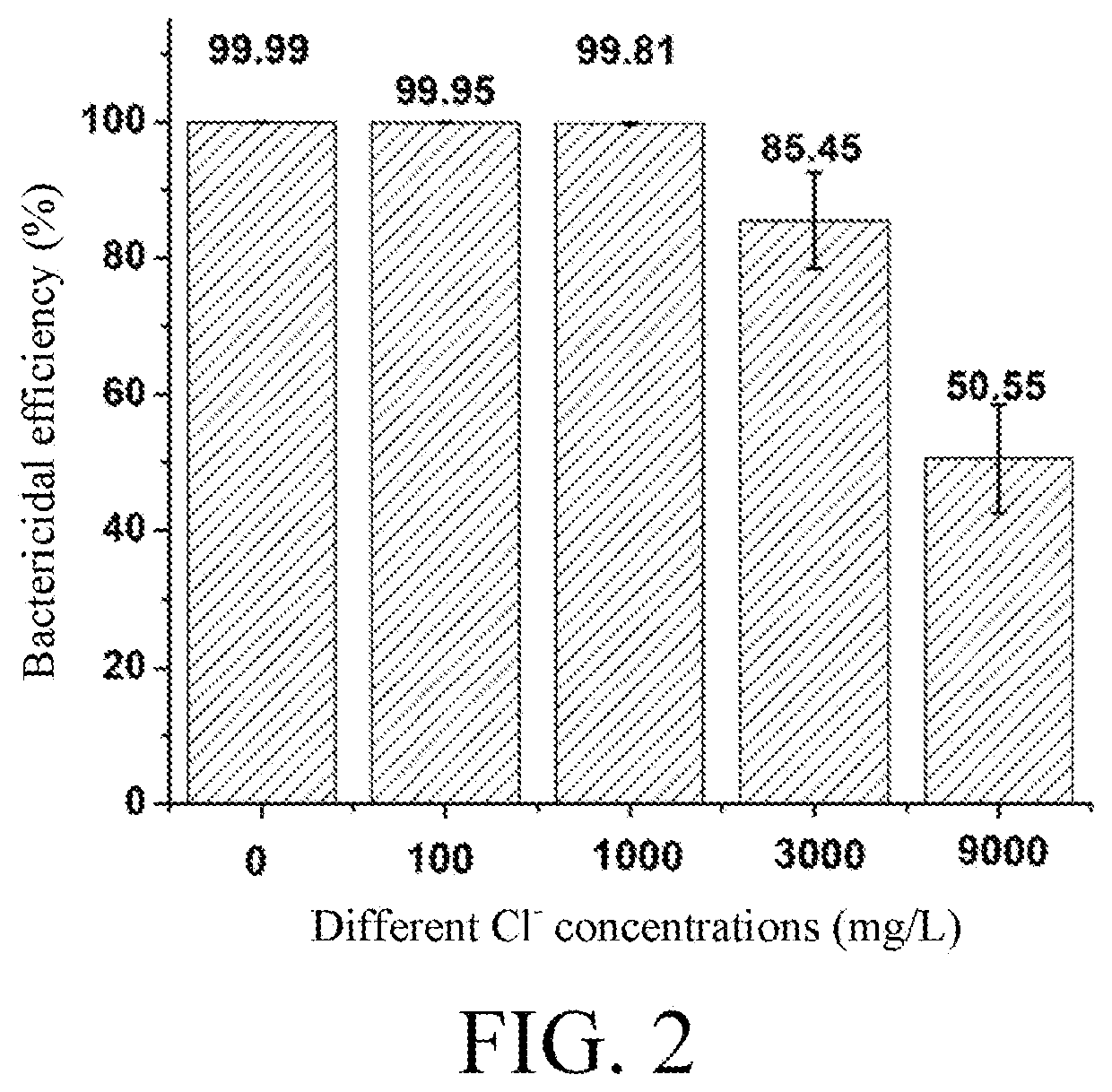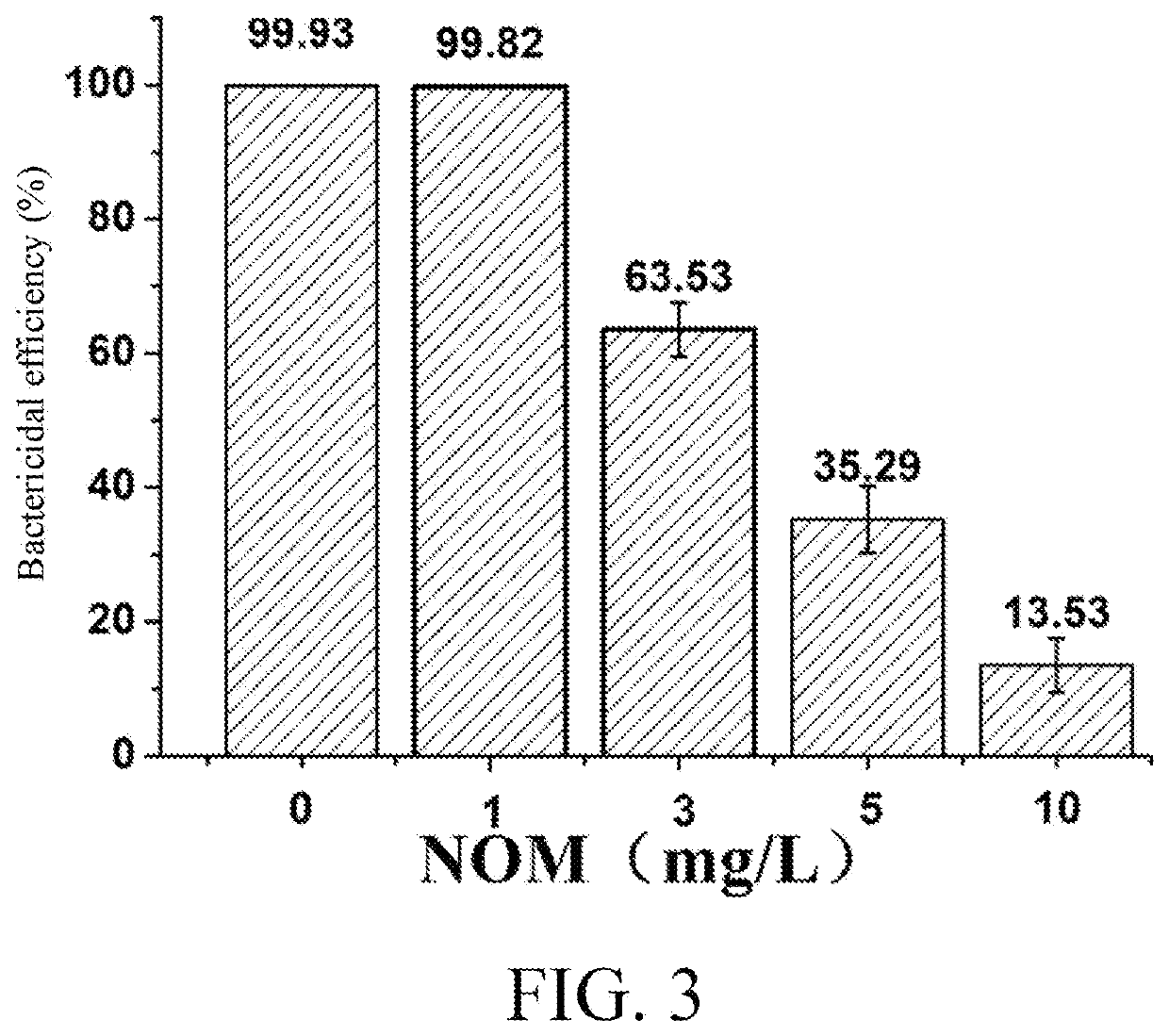Composite functional resin, preparation method therefor and use thereof
a functional resin and composite technology, applied in the field of composite functional resins, can solve the problems of difficult inactivation, increased health risk, serious threat to drinking water safety, etc., and achieve the effects of high bactericidal ability, long service life and high removal rate of pathogenic bacteria
- Summary
- Abstract
- Description
- Claims
- Application Information
AI Technical Summary
Benefits of technology
Problems solved by technology
Method used
Image
Examples
example 1
[0086]Control Group
[0087]Preparation of 500 g of a water phase: 2.5 g of hydroxyethyl cellulose, 25 g of sodium sulfate and the balance of water were weighed. 500 g of the water phase was added to a 2 L three-necked flask, and the stirring speed was controlled at 300 rpm. 60 g of a first monomer was weighed, in this example, the first monomer was glycidyl methacrylate. 60 g of glycidyl methacrylate (GMA), 10 g of divinylbenzene (DVB), 0.6 g of azodiisobutyronitrile, 1.8 g of benzoyl peroxide, and 30 g of cyclohexanol were added to the three-necked flask, and the mixture was heated to 60° C. for reaction for 8 h, then heated to 90° C. for reaction for 4 h, and cooled to room temperature. White or almost white acrylic resin balls were collected, extracted, washed and air-dried, and the acrylic resin was the first resin.
[0088]The acrylic resin (with an average particle size of 500 m) was sorted. 80 g of a first amine salt was weighed, in this example, the first amine salt was dodecyldi...
example 2
[0094]Preparation of 500 g of a water phase: 2.5 g of hydroxyethyl cellulose, 25 g of sodium sulfate and the balance of water were weighed.
[0095]500 g of the water phase was added to a 2 L three-necked flask, and the stirring speed was controlled at 300 rpm. 60 g of a first monomer was weighed, in this example, the first monomer was glycidyl methacrylate. 60 g of glycidyl methacrylate (GMA), 10 g of divinylbenzene (DVB), 0.6 g of azodiisobutyronitrile, 1.8 g of benzoyl peroxide, and 30 g of cyclohexanol were added to the three-necked flask, and the mixture was heated to 60° C. for reaction for 8 h, then heated to 90° C. for reaction for 4 h, and cooled to room temperature. White or almost white resin balls were collected, extracted, washed and air-dried to obtain the first resin.
[0096]The first resin (with an average particle size of 500 μm) was sorted. 80 g of a first amine salt was weighed, in this example, the first amine salt was dodecyldimethylamine hydrochloride. 20 g of the f...
example 3
[0102]The first monomer of this example had the structure of Formula (401), and when R0 was H, R1 was —CH3, and t=1, the first monomer had the structure of Formula (401-1):
[0103]The specific implementation was as follows:
[0104]Preparation of 500 g of a water phase: 2.5 g of methyl cellulose, 5 g of sodium dodecylbenzene sulfonate, 50 g of sodium sulfate and the balance of water were weighed.
[0105]500 g of the water phase was added to a 2 L three-necked flask. and the stirring speed was controlled at 400 rpm. 40 g of the first monomer having the structure of Formula (401-1), 20 g of methyl acrylate (MA), 20 g of styrene, 5 g of ethylene glycol dimethacrylate, 10 g of trimethylolpropane trimethacrylate, 1.0 g of azodiisobutyronitrile, 10 g of 200 # solvent oil and 10 g of n-butanol were added to the three-necked flask, and the mixture was heated to 50° C. for reaction for 12 h, then heated to 80° C. for reaction for 4 h, and cooled to room temperature. White or almost white resin ball...
PUM
| Property | Measurement | Unit |
|---|---|---|
| crosslinking degree | aaaaa | aaaaa |
| particle size | aaaaa | aaaaa |
| temperature | aaaaa | aaaaa |
Abstract
Description
Claims
Application Information
 Login to View More
Login to View More - R&D
- Intellectual Property
- Life Sciences
- Materials
- Tech Scout
- Unparalleled Data Quality
- Higher Quality Content
- 60% Fewer Hallucinations
Browse by: Latest US Patents, China's latest patents, Technical Efficacy Thesaurus, Application Domain, Technology Topic, Popular Technical Reports.
© 2025 PatSnap. All rights reserved.Legal|Privacy policy|Modern Slavery Act Transparency Statement|Sitemap|About US| Contact US: help@patsnap.com



